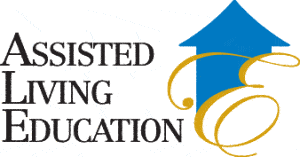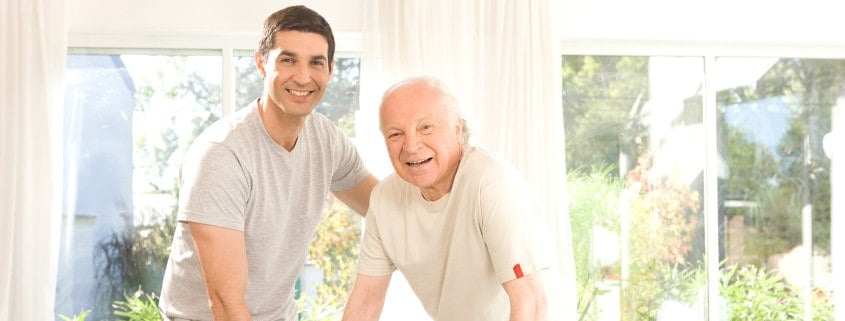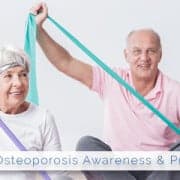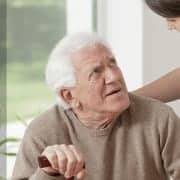Preventing Falls for Elderly Residents
Safety is a number one priority in residential care facilities. With elderly residents, extra precautions must be observed as their physical bodies, health, and frame of mind are more susceptible to injury. Elder falls are of special concern, as a reported one third of the population over 65 will fall each year, and those over 80 increase to over half. These falls can result commonly in hip fractures or other injuries. Additionally, about half of the adults who experienced a hip fracture-related fall are likely to fall again in another 6 months. Elder falls are such a great issue that Congress passed the Elder Fall Prevention Act (H.R. 3513) in 2003 for expanding effective education, services, and research on this topic.
Assisted Living Education provides some common and typical precautions taken in residential care facilities to prevent falls and injury in elderly residents.
Causes of Elder Falls
In order to prevent elderly falls, it’s important to understand why they occur in the first place. There are several risk factors that can increase the chances of a fall.
Weakened muscle tone, gait problems – Elderly who are not as active as their peers may experience a decrease in muscle tone, causing parts of the body to give out more easily. Difficulty walking because of arthritis, joint, or other issues can also increase the risk of losing balance.
Blood pressure fluctuation – ‘Postural hypotension,’ or a decrease in blood pressure due to rising too quickly from a sitting or lying position can occur more easily in elderly, sometimes with dizziness. Causes for this may be dehydration, side effects from medication, or another underlying disease like diabetes.
Slowed reflexes – As people age, their bodies and reflexes are slower, causing a delay in reaction time. Elderly may not be able to react as quickly to prevent a fall.
Sensory issues – Some people experience a loss of sensation in the extremities. If this occurs in the feet, it is difficult to realize when you are stepping or to detect a change in terrain.
Poor vision – Vision problems can make it difficult to see a clear (or unclear) pathway, or cause a slower adjustment time to changes in light. Poor depth perception can also cause problems around stairs or unfamiliar environments.
Confusion – Moments of disorientation itself or fear/panic from the confusion can cause a misstep. Also, wheelchair or bed-bound residents may forget that they cannot walk and attempt to get up.
Medications – Some medications can cause dizziness or low blood pressure, causing instability.
Preventing Elder Falls & Injuries
The residents in a care facility generally have more compromised health conditions than the ‘outside’ elderly community and can require vigilance to ensure their safety. Knowing your residents, their conditions, and risks can help you and your facility think proactively in taking and enforcing preventative measures.
Commonly seen preventative measures include:
Around the Facility
- Maintaining clear pathways
- Avoiding use of carpet or rug to prevent tripping from uneven surfaces. If there is a carpeted surface, commercial-grade is best for the short fibers and extra durability.
- Using textured adhesives on sloping floors for extra grip
- Using ramps in place of any steps
- Installing grab bars in shower spaces and bathrooms
- Using raised toilet seats or commodes
- Using a shower seat or bench for bathing
- Lowering bed heights
- Installing handrails along the hallways
Make sure the residents’ call buttons are easily accessible, and a timely response also encourages residents to request for assistance.
Individual Concerns & Major Fall Risks
Some residents may use walking aids such as a cane or a walker to help with mobility. Ensuring that these implements are the proper height helps prevent misuse that could lead to a fall. Ill-fitted clothing can also become a problem, especially with the use of walking aids. If there is family involved, asking them to ensure pants or skirts are of proper fit, or even hemming them slightly can be helpful. Reviewing these types of precautions during the admissions process or a debriefing meeting can help the family become more involved and further assist with the care of their family member.
Residents who repeatedly attempt to get up unassisted can be considered a major fall risk. This can happen in stubborn residents or residents with dementia, especially if they have been bed or wheelchair-bound only a short time. They may forget that they are not supposed to get up unassisted, or are determined to reclaim their independence.
The following are extra preventative measures that can be employed for those who present an elevated fall risk.
Bed or personal alarms – Bed alarms detect when there is a major shift in weight or movement, as in a person attempting to sit up and get out of bed. These alarms help alert a staff member to come quickly and check on the resident. Personal alarms work similarly for use in the wheelchair. One type hangs off the back of the wheelchair and clips on to the back of the resident’s clothing. If the resident leans too far forward in an attempt to rise, the device separates and the alarm is engaged. Another type is a pad which fits on their seat, and when a significant shift/decrease in weight is detected, the alarm will sound.
Room placement – Assigning a high risk fall resident to a room near the nurse’s station can help keep eyes on any independent attempts to get up.
Extremely lowered bed heights – Any time a high risk resident is in bed, adjust their bed height to the lowest setting possible so they are closer to the ground in case of any attempts.
Floor mat – For residents persistent in their attempts, a floor mat placed next to the bed during the night, in addition to the lowered bed height, can also offer added protection.
Hip pads were also created in an attempt to prevent injury in case of a fall, but they’ve received mixed reviews. Some studies reveal no significant statistical data in their favor. Additionally, many hip fractures can occur not just from an impact, but because of an abnormal movement or rotation of the hip during a fall.
Other Precautions
For residents who have little or no issues with cognitive or memory functions, they may benefit from extra education from an occupational or physical therapist to review safety and fall precautions. Those recovering from a procedure or injury should already receive instruction on how to accommodate their new (i.e. limited) range of movement. If the resident has limited mobility and uses a walker or wheelchair much of the time, physical and/or occupational therapy generally covers how to safely and properly transfer from bed to standing position/wheelchair and vice versa, as well as commode and shower seat/bench transfers.
Other residents can benefit from such education as well, but may require frequent prompts and assistance due to difficulty in recalling steps and sequences.
Keeping the residents active as much as possible is not only good for their overall health, but can help keep muscle tone and prevent stiffness or muscle atrophy, which can contribute to a fall. Non-ambulatory residents can still exercise to maintain strength in their arms and hands.
The Overall Picture
Considering the overall health of the resident is crucial to their care. One issue can lead to a cascade of problems. For example, a toothache can lead to decreased food and liquids intake, resulting in weakness and risk of dehydration, leading to an increased risk of a fall. What seem like small problems can also escalate quickly in residents with compromised health, so quick identification and resolve are key to maintaining their general health and well-being.
Information from the initial comprehensive health examinations, mental & cognitive evaluations, fall risk assessments, and review of resident’s history all help in designing an individualized care plan. This information can also be useful in evaluating if your residential facility may need additional precautions throughout the premises.
______
Assisted Living Education is committed to providing the best in quality education for assisted living services. Our professional instructors have had years of real, hands-on, and practical experience that enrich our already-extensive courses. We offer RCFE classes, licensing, and other products and services for assisted living, plus RN, LVN, and SNF continuing education through our online classes. Explore our website for more information, visit our contact page, or call 1-855-200-0188 for immediate service. We look forward to working with you!






